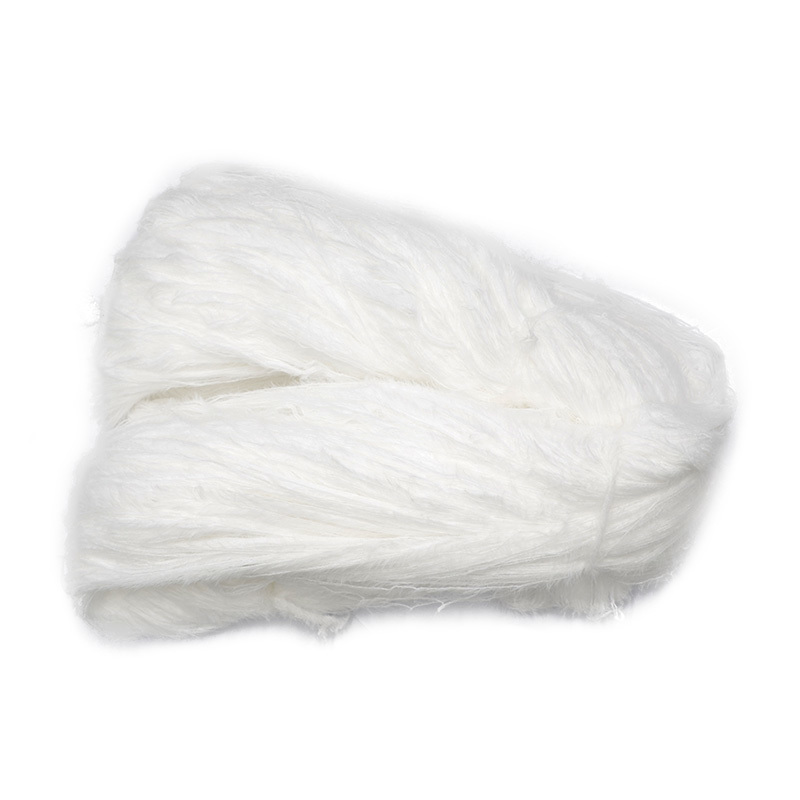
Twisted yarn
It mainly produces various specifications of nylon twisted yarn, polyester twisted yarn, low and high elastic yarn twisted, rayon twisted yarn Twisting and special varieties of twisting, etc., with high-speed winding machine, double twisting machine, automatic vacuum setting furnace and other complete supporting equipment, the annual production capacity of twisted silk is more than 2,500 tons.
Category:
Feather Yarn for Cashmere
Keywords:Nylon Twisted YarnPolyester Twisted YarnFeather Yarn
Twisted yarn
Product Description
At present, there are many yarn weaving equipment on the market, which can be divided into woven yarn and knitted yarn. So what is the difference between the two? Among them, knitting yarn requires higher conditions, and the woven product has better softness, and at the same time It also has a certain degree of elongation and strength. In the process of forming knitted fabrics on the knitting machine, it is found that the mechanical effects are more complex, such as friction, bending, stretching, twisting and so on. In order to ensure normal production and good product quality, woven yarns should meet the following requirements.
In the woven yarn, the yarn should have a certain degree of extensibility and strength, because the strength of the yarn is often related to the quality index of the woven yarn, because the yarn will be subjected to repeated tension and load during the weaving process. Therefore, the woven yarn is required to have a certain strength. In addition, in the process of weaving the yarn into a loop, it also needs to be twisted and bent, so the woven yarn is required to have a certain extensibility, which can be easily bent into a loop during the weaving process, so as to reduce the number of yarns. The line is broken.
In addition, the yarn also has a certain degree of softness, in which the softness of the knitting yarn is higher than that of the woven yarn, because the soft yarn is easier to be twisted and bent, and the loop of the knitted product is made. The structure is more uniform, the appearance is clearer and more beautiful, and it can also reduce the breakage of the sand line of the woven yarn during the production process and damage to the components.
It is found in the woven yarn that it should have a certain viscosity. Generally speaking, the twist of the knitting yarn is much lower than that of the woven yarn, because if the viscosity is too high, the softness of the yarn will be poor, and it will be more difficult to be used in the weaving process. It is easy to be twisted, and it is very easy to kink in one round of bending, which can cause defects or damage the device.
In addition, excessively twisted yarn will affect the elasticity of the knitted fabric and skew the loops. However, the twist of the knitting yarn should not be too low, otherwise it will affect its strength, increase the breakage during weaving, and the yarn will be bulky, making the fabric prone to pilling and reducing the wearability of the knitted fabric. Therefore, the correct choice of twist is an important way to reasonably select the yarn. The use of woven yarns is different, and the twist requirements are also different.
(1) Single jersey requires tightness, smooth surface, clear lines, and the twist of the yarn should be larger, which can be close to the standard of warp yarn for weaving with the same linear density.
(2) The twist of the yarn for outerwear should be larger to enhance the stiffness and improve the pilling phenomenon.
(3) Cotton wool cloth and elastic cloth are required to be soft and elastic, and the twist of the yarn should be slightly lower. Generally, the lower deviation of the twist of the weft yarn with the same linear density is used for weaving.
Pre :
: Next
Related Products
Messages








